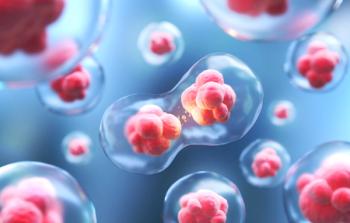
Harvard Team Designs Algorithm for HRD, May Find More Patients Eligible for PARP Inhibitors
The scientists used machine learning to test the algorithm and believe it could double the number of women who would be treated with poly (ADP-ribose) polymerase (PARP) inhibitors for breast cancer.
For all the patients who are already benefiting from the new class of targeted therapy known as poly (ADP-ribose) polymerase (PARP) inhibitors, scientists know they miss others who could benefit because many genetic panels miss patients with homologous recombination deficiency (HRD) if they lack a BRCA 1/2.
Now, a team of Harvard Medical School scientists have created an algorithm that can detect the molecular signature of HRD, even in low mutation counts of BRCA 1/2, or for patients who have HRD without these mutations.
Peter Park, PhD, professor of biomedical informatics at the Blavatnik Institute, said
An article about the algorithm, called SigMA (Signature Mutational Analysis) appears in Nature Genetics.
Adding this algorithm to standard testing protocols could be a more cost-effective and reliable way to identify the pool of cancer patients captured who need treatment with PARP inhibitors, which work by blocking enzymes that let the cancer cells repair DNA. Right now, HRD testing is not automatic.
Ovarian cancer, one of the genetically driven cancers that can be treated with PARP inhibitors, offers an example: While recommendations for testing expanded under the most recent set of
PARP inhibitors—which today include niraparib, olaparib, and rucaparib—are also used to treat breast cancer, prostate cancer, and pancreatic cancer. The Harvard team estimates that in breast cancer alone, using the algorithm could double the number of patients who would benefit from PARP inhibitors, from 5% to 10%, or 13,500 to 27,000 of newly diagnosed patients to 27,000 to 54,000, based on a computer simulation.
Researchers said that their algorithm is “trained” to detect molecular signals of HRD even if patients are given standard clinical tests that only use a subset of genes, not full genomic sequencing. They tested it against 730 samples that had been analyzed by whole-genome sequencing; even though it was reading fewer genes and mutations, the SigMA model identified 163 of 221 samples with HRD, for a 73% accuracy rate—an improvement over current methods that detect HRD cancer cells at rates of 30% to 40%.
Reference
Gulhan DC, Lee JJK, Melloni GEM, Cortes-Ciriano I, Park PJ. Detecting the mutational signature of homologous recombination deficiency in clinical samples [published online April 15, 2019]. Nature Genetics. doi: 10.1038/s41588-019-0390-2.
Newsletter
Stay ahead of policy, cost, and value—subscribe to AJMC for expert insights at the intersection of clinical care and health economics.














































